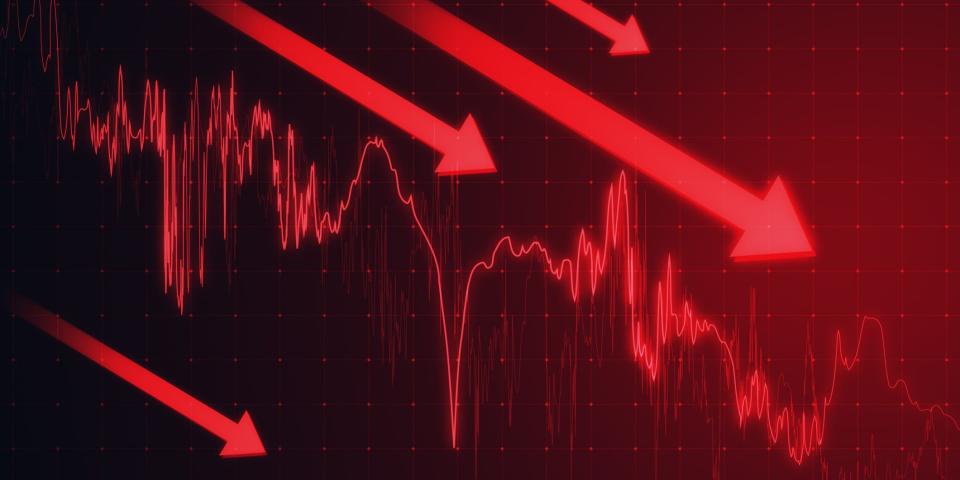An overload of warning signals mark the 'last straw' that could send the S&P 500 plunging 70%, famed permabear says

A high concentration of warning signals suggest a major market correction ahead, John Hussman said.
"There's nothing magical about these syndromes, but when dozens of them kick in at the same time, we do pay attention."
Despite his warning, Wall Street remains bullish, expecting the index to stay above 5,000 this year.
A growing tally of ringing market alarms suggest the S&P 500 has at last reached its speculative peak, permabear John Hussman wrote on Monday. He says a major crash is likely to follow next.
In a new note, the well-known bear doubled down on his outlook of a 50%-to-70% correction for the benchmark index this cycle. It's a call the Hussman Investment Trust president has repeatedly outlined, based on a number of market red flags tracked by his firm.
For instance, there's the fact that negative market leadership is at a five-year high, with stocks hitting fresh lows quicker than they are breaching new highs.
"Alone, I view it as a useful but insufficient gauge of market conditions," Hussman said. "In combination with much broader speculative warnings, however, it's one of the 'last straws' I described a few weeks ago."
As of Friday, these tracked "warning syndromes" in daily data have catapulted beyond tallies seen in 2000, 2007, late-2018, and early-2020, years that were all associated with a crash.
"There's nothing magical about these syndromes, but when dozens of them kick in at the same time, we do pay attention," he wrote.
While the measures alone are only enough to highlight short-term danger, unfavorable market internals should also serve as a wake up call. Meanwhile, current extremes in market valuation make this a long-term risk as well.
According to Hussman's most reliable gauge — the ratio of nonfinancial market capitalization to corporate gross value-added — market valuations exceed even 1929 levels, when the Dow hurtled 89% peak-to-trough.
"I don't think it's generally possible to identify market peaks and troughs in real-time, but there are unusual points in history when one observes a sudden deluge of conditions that suggest a speculative climax or risk-averse capitulation," he said.
While this likely means that further highs in the S&P will be minimal, Hussman's projected correction wouldn't necessarily be immediate, he said. Meanwhile, most of Wall Street remains bullish on the market, and generally expects the index to remain above 5,000 through this year.
Hussman's track record
For the uninitiated, Hussman has repeatedly made headlines by predicting a stock-market decline exceeding 60% and forecasting a full decade of negative equity returns. And as the stock market ground mostly higher, he persisted with his doomsday calls.
But before you dismiss Hussman as a wonky perma-bear, consider again his track record. Here are the arguments he's laid out:
He predicted in March 2000 that tech stocks would plunge 83%, then the tech-heavy Nasdaq 100 index lost an "improbably precise" 83% during a period from 2000 to 2002.
He predicted in 2000 that the S&P 500 would likely see negative total returns over the following decade, which it did.
He predicted in April 2007 that the S&P 500 could lose 40%, then it lost 55% in the subsequent collapse from 2007 to 2009.
However, Hussman's recent returns have been less than stellar. His Strategic Growth Fund is down more than 50% since December 2010, through April. The S&P 500, by comparison, is up significantly over the period.
Read the original article on Business Insider

 Yahoo Finance
Yahoo Finance 